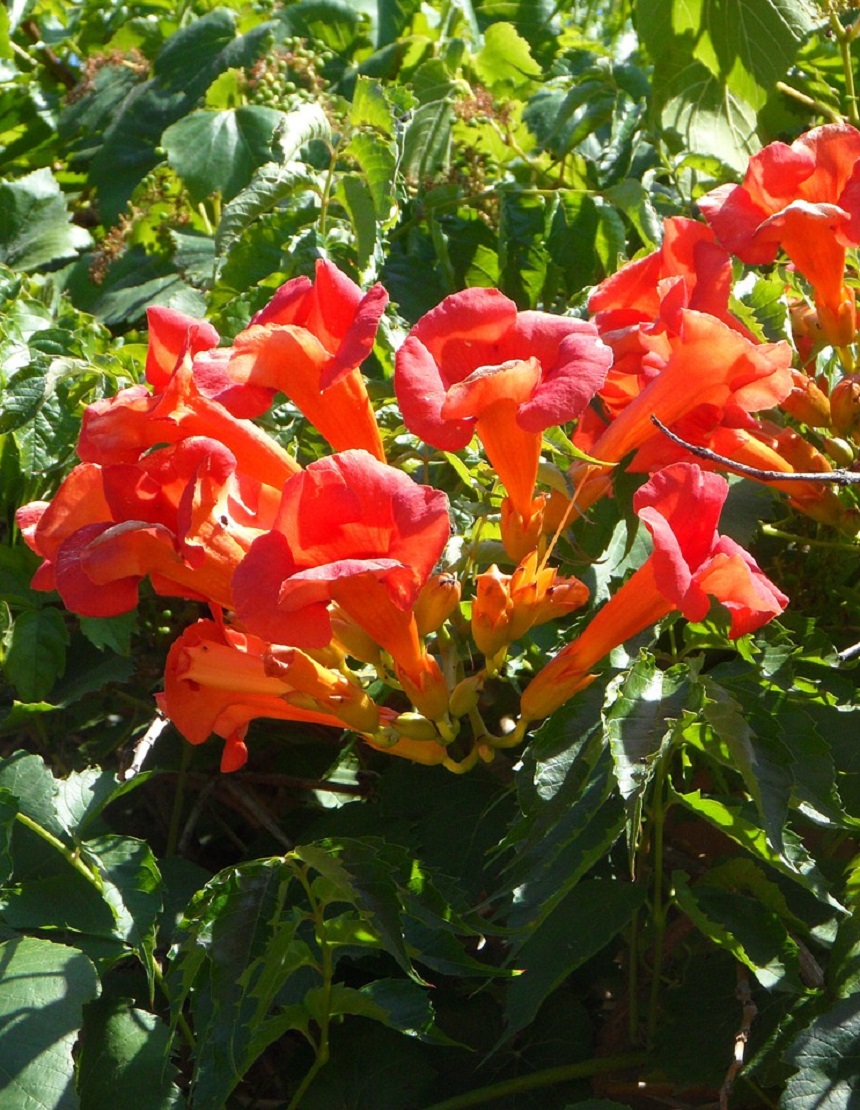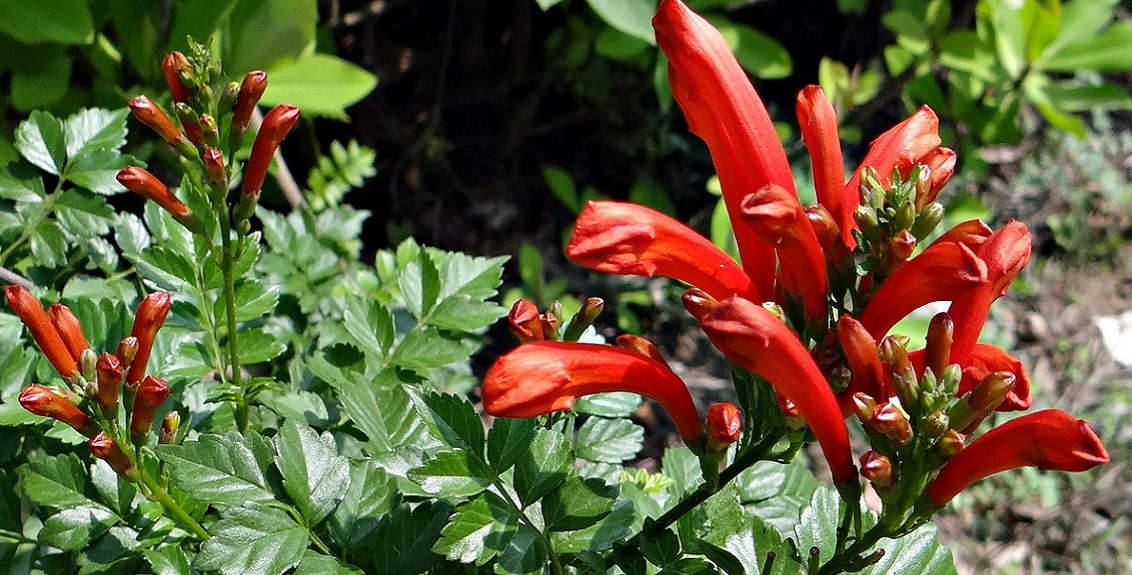Tecoma capensis (Tecomaria capensis) – Cape Honeysuckle is a vining shrub with intense orange flower clusters. The name Cape Honeysuckle came about, because the native region for this shrub is in South Africa, by the Cape of Good Hope. It is a bit misleading as this is not a true Honeysuckle.
This plant is not hardy and should be planted in zones 9 – 11 for best results. However if you have a conservatory or heated greenhouse you could grow this plant. It can possibly survive in zone 8 with some protection. As a shrub, it can be anywhere from 3-10′ tall, depending on how consistently you prune it. In vine form it will travel a lot farther, reaching lengths of 25-30′ or more.
This guide tells you more about Cape Honeysuckle
Growing Tips
- This plant can handle both acidic and alkaline soils.
- It also grows in salty locations like coastal regions and can handle gusts of wind.
- After a year of regular watering, the roots should be established enough to provide drought tolerance.
- If you’ve tested the soil and detected a lack of nutrients, go ahead and use some fertilizer. However, it is usually not needed.

Maintenance/Pruning
- Pruning depends on the shape you’ve chosen.
- If you’re going for a hedge, trimming may be required on a regular basis since this grows fast.
- Cut it back to the ground every 3-4 years in the spring (or as needed) to help keep it from sprawling.
- You should also prune away branches that were damaged by frost at the start of spring.
- This plant does produce suckers. Clip them away if you don’t want them to spread.
- Less maintenance will be needed if you’re using it as a vine. You will just need to keep it trained to its support system.

